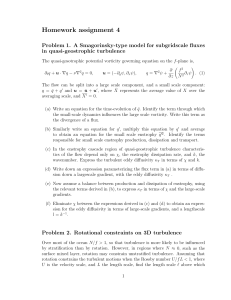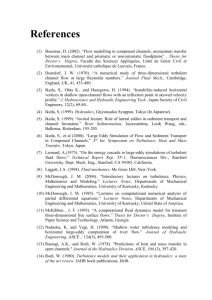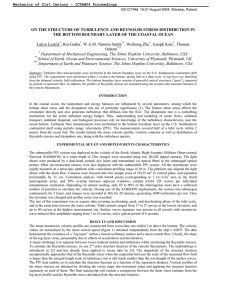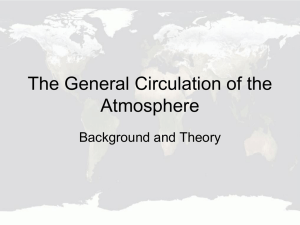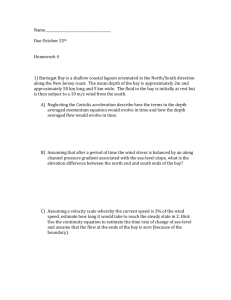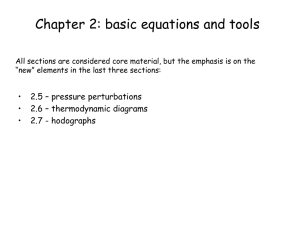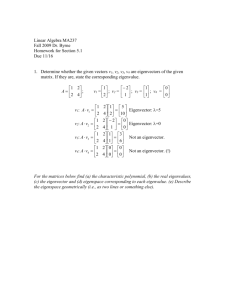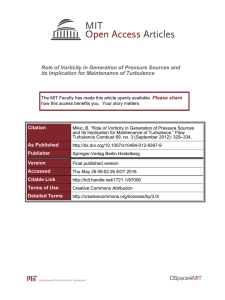Alignments and small scale statistics in the production region of grid
advertisement
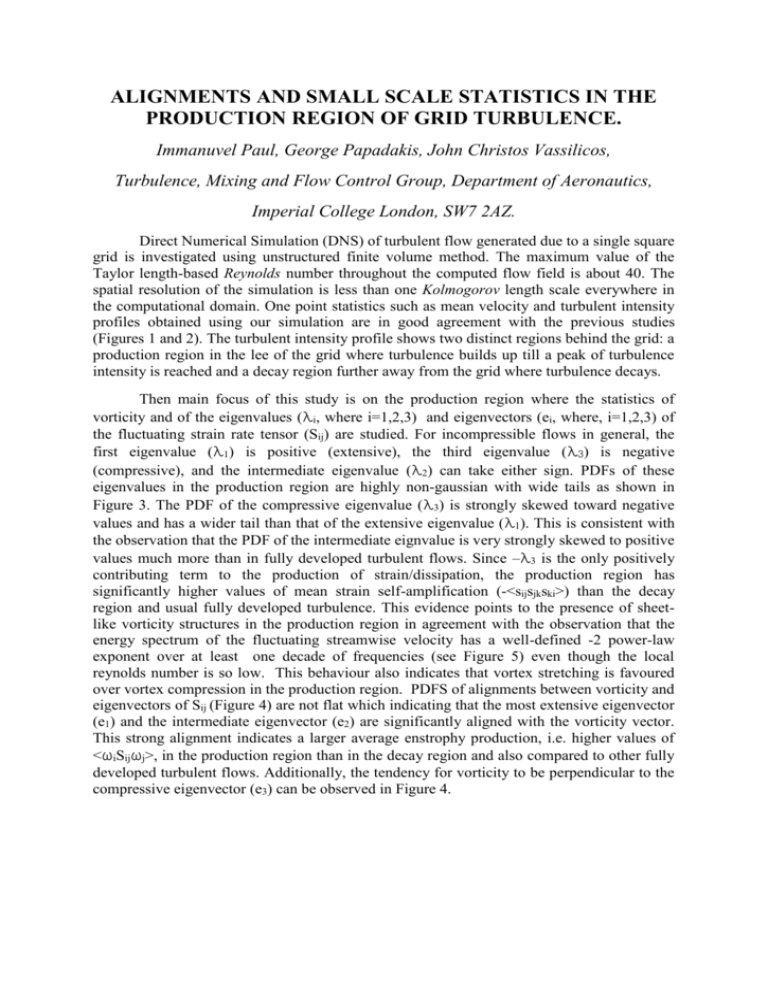
ALIGNMENTS AND SMALL SCALE STATISTICS IN THE PRODUCTION REGION OF GRID TURBULENCE. Immanuvel Paul, George Papadakis, John Christos Vassilicos, Turbulence, Mixing and Flow Control Group, Department of Aeronautics, Imperial College London, SW7 2AZ. Direct Numerical Simulation (DNS) of turbulent flow generated due to a single square grid is investigated using unstructured finite volume method. The maximum value of the Taylor length-based Reynolds number throughout the computed flow field is about 40. The spatial resolution of the simulation is less than one Kolmogorov length scale everywhere in the computational domain. One point statistics such as mean velocity and turbulent intensity profiles obtained using our simulation are in good agreement with the previous studies (Figures 1 and 2). The turbulent intensity profile shows two distinct regions behind the grid: a production region in the lee of the grid where turbulence builds up till a peak of turbulence intensity is reached and a decay region further away from the grid where turbulence decays. Then main focus of this study is on the production region where the statistics of vorticity and of the eigenvalues (λi, where i=1,2,3) and eigenvectors (ei, where, i=1,2,3) of the fluctuating strain rate tensor (Sij) are studied. For incompressible flows in general, the first eigenvalue (λ1) is positive (extensive), the third eigenvalue (λ3) is negative (compressive), and the intermediate eigenvalue (λ2) can take either sign. PDFs of these eigenvalues in the production region are highly non-gaussian with wide tails as shown in Figure 3. The PDF of the compressive eigenvalue (λ3) is strongly skewed toward negative values and has a wider tail than that of the extensive eigenvalue (λ1). This is consistent with the observation that the PDF of the intermediate eignvalue is very strongly skewed to positive values much more than in fully developed turbulent flows. Since –λ3 is the only positively contributing term to the production of strain/dissipation, the production region has significantly higher values of mean strain self-amplification (-<sijsjkski>) than the decay region and usual fully developed turbulence. This evidence points to the presence of sheetlike vorticity structures in the production region in agreement with the observation that the energy spectrum of the fluctuating streamwise velocity has a well-defined -2 power-law exponent over at least one decade of frequencies (see Figure 5) even though the local reynolds number is so low. This behaviour also indicates that vortex stretching is favoured over vortex compression in the production region. PDFS of alignments between vorticity and eigenvectors of Sij (Figure 4) are not flat which indicating that the most extensive eigenvector (e1) and the intermediate eigenvector (e2) are significantly aligned with the vorticity vector. This strong alignment indicates a larger average enstrophy production, i.e. higher values of <ωiSijωj>, in the production region than in the decay region and also compared to other fully developed turbulent flows. Additionally, the tendency for vorticity to be perpendicular to the compressive eigenvector (e3) can be observed in Figure 4. Fig: 1 Streamwise evolution of mean velocity. Fig: 3 PDF’s of the eigenvalues of the strain rate tensor. Fig: 2 Streamwise evolution of turbulent intensity. Fig: 4 PDF’s of the cosine of the angle between vorticity and eigenvectors of the strain rate tensor. Fig: 5 Energy spectrum of the fluctuating streamwise velocity

